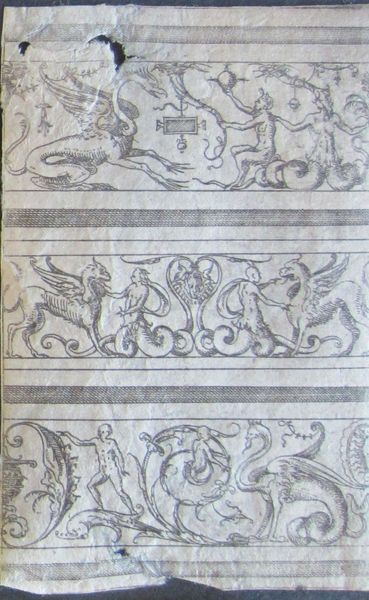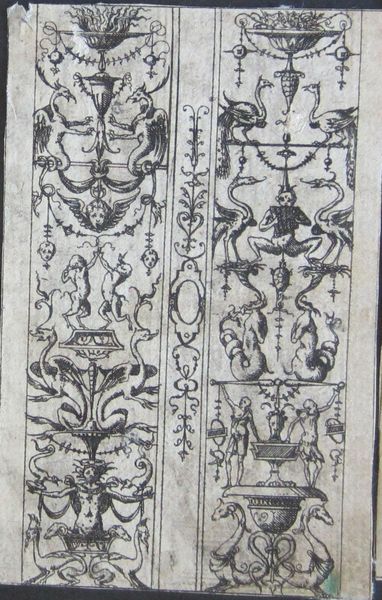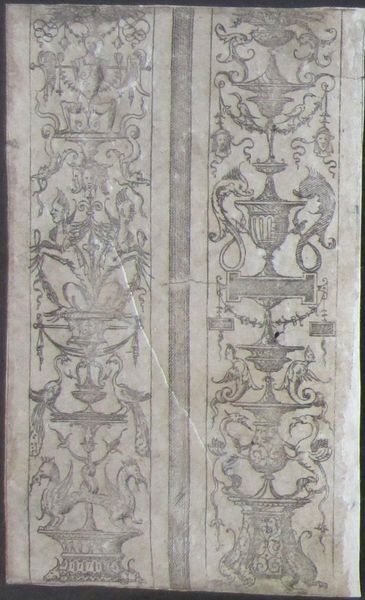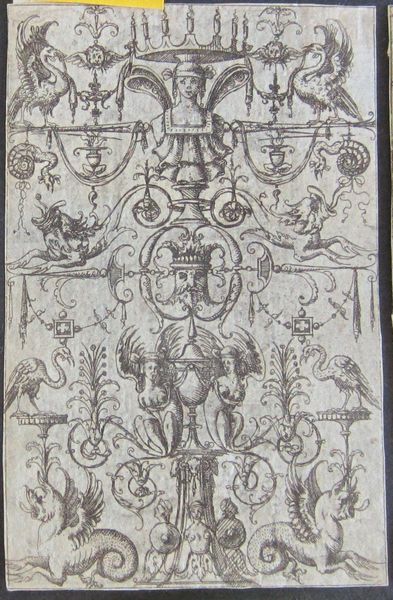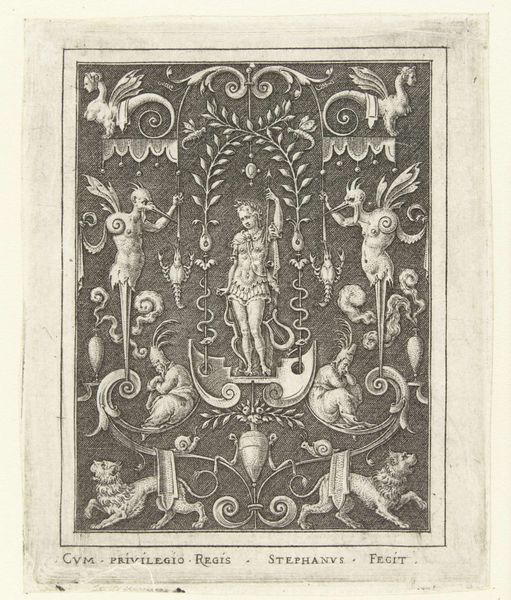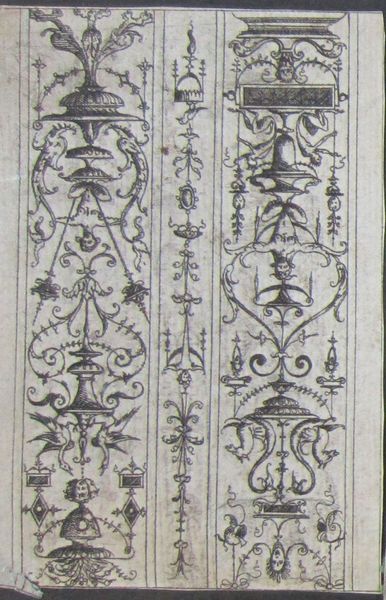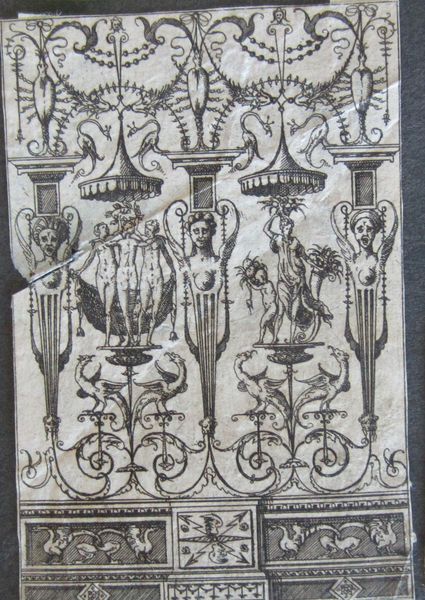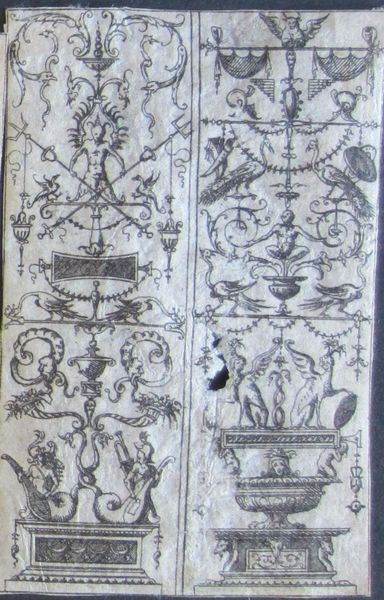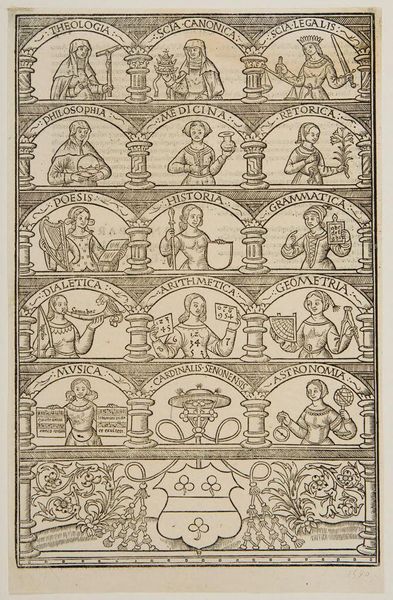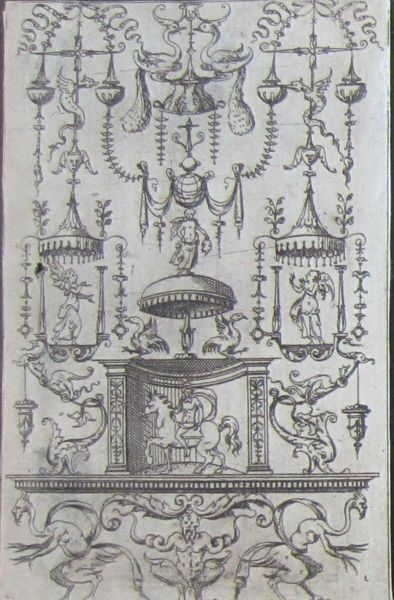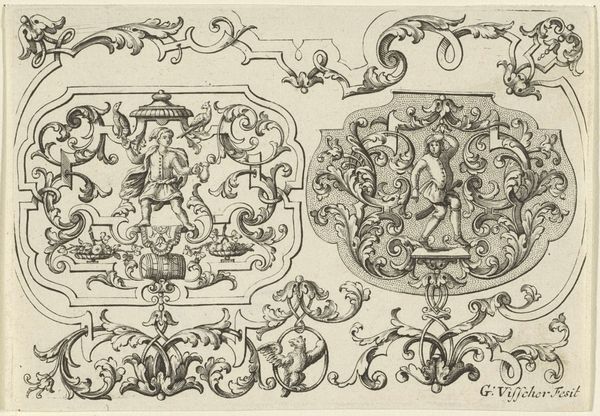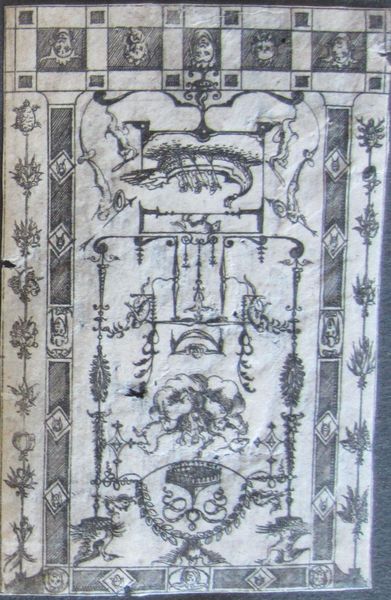
Three Friezes of Grotesques, the Lowest One with Two Snarling Dogs 1550
0:00
0:00
Dimensions: sheet: 10.6 x 6.8 cm (4 3/16 x 2 11/16 in.)
Copyright: CC0 1.0
Editor: This is Jacques Androuet Du Cerceau’s “Three Friezes of Grotesques, the Lowest One with Two Snarling Dogs.” It’s a small print, full of bizarre hybrid creatures. How do you interpret the use of grotesque imagery during this period? Curator: It's crucial to consider the sociopolitical climate. The grotesque, embraced during the Renaissance, wasn't merely decorative. It was a visual language of resistance, a way to critique established norms and hierarchies through the absurd and the monstrous. Consider how these fantastical creatures challenge the rigid order of the classical tradition. Editor: That’s interesting. So, were these images a subtle form of rebellion? Curator: Absolutely. They offered a space for imagining alternative realities and questioning power structures. The snarling dogs, for instance, could symbolize the untamed forces that threaten social stability, or perhaps a commentary on the predatory nature of those in power. What do you think? Editor: I see your point. I hadn't considered the rebellious aspect before. Curator: It’s a reminder that even seemingly decorative art can be deeply intertwined with the social and political currents of its time. It certainly gives me a lot to think about. Editor: Me too. Thanks!
Comments
No comments
Be the first to comment and join the conversation on the ultimate creative platform.
